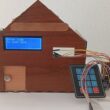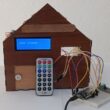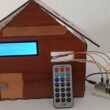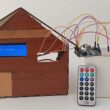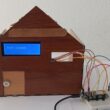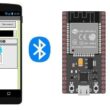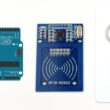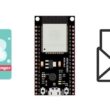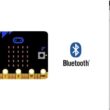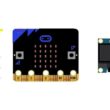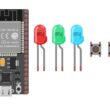Detect gas leaks using Arduino, MQ-4 sensor and SSD1306 screen
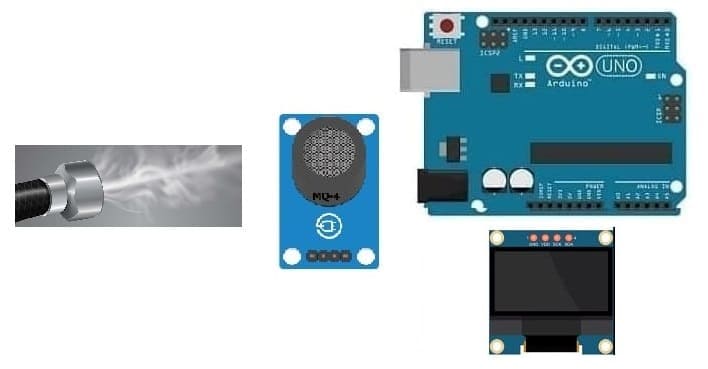
Tutorial plan
Introduction
1- How does the arduino detect gas leaks and display an alert message on the SSD1306 ?
2- Necessary system components
3- Mounting the Arduino board with the MQ-4 sensor and SSD1306 screen
4- Program the Arduino board to detect the gas leak and display an alert message
Introduction
Gas leak detection refers to the process of identifying and locating leaks in systems that contain gases, such as natural gas, propane, methane, or other potentially hazardous gases. This process is crucial for ensuring safety, preventing accidents, and minimizing environmental impact.
Various methods and technologies are used for gas leak detection, including:
Gas Sensors: Gas sensors, such as the MQ-4 sensor mentioned earlier, are commonly employed for detecting specific gases. These sensors operate based on principles such as conductivity changes, catalytic reactions, or infrared absorption. They can be integrated into fixed systems or portable devices for continuous monitoring or spot-checking.
Electronic Gas Detectors: Electronic gas detectors are sophisticated instruments designed for detecting a wide range of gases. They typically utilize advanced sensor technologies combined with microcontrollers for accurate and reliable gas detection. These detectors may provide visual and audible alarms when gas concentrations exceed predefined thresholds.
Ultrasonic Leak Detectors: Ultrasonic leak detectors are capable of detecting gas leaks by sensing the ultrasonic sound produced by escaping gas. They are particularly useful for detecting leaks in pressurized systems or pipelines.
Flame Ionization Detectors (FID): FID instruments detect hydrocarbon gases by measuring the ionization of molecules in a flame. They are highly sensitive and are often used in industrial settings for detecting volatile organic compounds (VOCs) and other hydrocarbons.
Visual Inspection: Visual inspection involves physically inspecting gas pipes, fittings, valves, and other components for signs of leakage, such as corrosion, cracks, or damaged seals. This method is commonly used in conjunction with other detection techniques.
Gas Tracer Dyes: Gas tracer dyes are sometimes added to gas lines to aid in leak detection. These dyes are visible under ultraviolet light and can help locate leaks by fluorescing at the point of leakage.
Gas Chromatography: Gas chromatography is a laboratory technique used for analyzing the composition of gas samples. While not typically used for real-time leak detection, it can be employed for precise analysis and identification of gas components.
Effective gas leak detection often involves a combination of these methods to ensure comprehensive coverage and reliable results. Regular inspection, maintenance, and calibration of detection equipment are essential for maintaining the safety and integrity of gas systems.
How does the arduino detect gas leaks and display an alert message on the SSD1306 ?
The MQ-4 gas sensor is a type of semiconductor gas sensor commonly used to detect the presence of methane (CH4) gas in the atmosphere. It belongs to a family of gas sensors known as the "MQ series," which are widely used in various applications, including industrial safety, gas leakage detection, and environmental monitoring.
Using this sensor, we can create a simple but effective gas leak detection system, controlled by an Arduino board and providing visual alerts via an SSD1306 screen.
Here is a brief description of this system:
1- The Arduino board periodically reads the analog value from the MQ-4 sensor using one of its analog pins.
2- Based on the read value, the Arduino board determines if the gas concentration exceeds a predefined threshold, indicating the presence of a gas leak.
3- If a gas leak is detected, the Arduino board sends a signal to clear the SSD1306 screen and display an alert message indicating the presence of a gas leak.
4- If no gas leak is detected, a message indicating the absence of a leak is displayed on the SSD1306 screen.
5- This process repeats in a loop, allowing continuous monitoring of gas presence and real-time alert display.
By combining these components, we can create a simple yet effective gas leak detection system controlled by an Arduino board and providing visual alerts via an SSD1306 screen.
Necessary system components
Arduino UNO Board
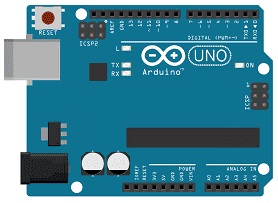
The Arduino Uno board is a microcontroller board based on the ATmega328P microcontroller. It's one of the most popular and widely used boards in the Arduino family due to its simplicity and versatility.
It is the central control unit for your project.
MQ-4 gas sensor:
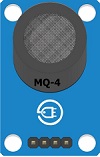
The MQ-4 gas sensor is used to detect gas leak
SSD1306 screen
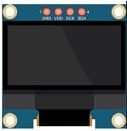
The SSD1306 is a popular display controller used in OLED (Organic Light-Emitting Diode) screens. It's commonly employed in various electronics projects to showcase information on small screens. The SSD1306 controller is compatible with different screen sizes and is often integrated with microcontrollers like Arduino UNO board to display text, graphics, and images.
The SSD1306 screen is used to display the alert message in case of gas leak detection.
Jumper Wires:

For making temporary connections and wiring between components.
Breadboard:

A breadboard is a useful tool for creating temporary electronic circuits. It allows you to connect components without soldering.
Mounting the Arduino board with the MQ-4 sensor and SSD1306 screen
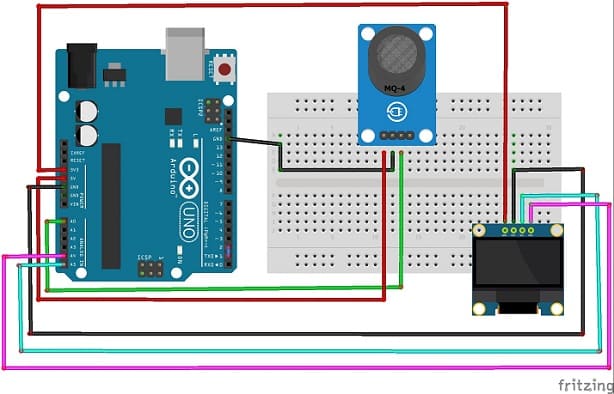
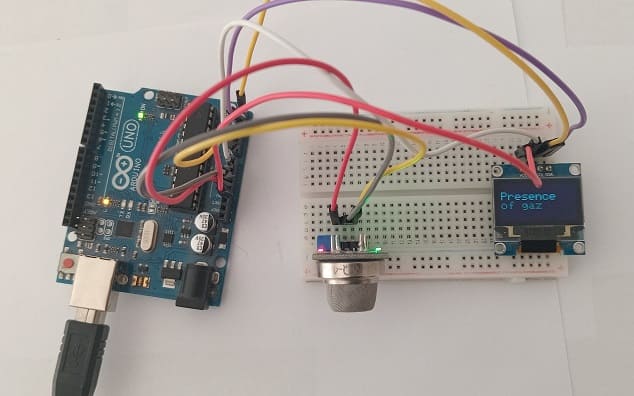
Connect the MQ-4 sensor connections to the Arduino board :
- Connect the VCC pin of the MQ-4 sensor to the 5V pin of the Arduino
- Connect the GND pin of the MQ-4 sensor to the GND pin of the Arduino
- Connect the DO pin of the MQ-4 sensor to the A0 pin of the Arduino
Connect the SSD1306 screen to Arduino:
- Connect the SDA (data line) of the SSD1306 screen to A4 pin of Arduino.
- Connect the SCL (clock line) of the SSD1306 screen to A5 pin of Arduino.
- Connect the VCC pin of the SSD1306 screen to the 3.3V pin of Arduino.
- Connect the GND pin of the SSD1306 screen to GND pin of Arduino.
Program the Arduino board to detect the gas leak and display an alert message
Here is a simple code example to accomplish this task:
import this library : Adafruit_SSD1306 for SSD1306 display
|
1 2 3 4 5 6 7 8 9 10 11 12 13 14 15 16 17 18 19 20 21 22 23 24 25 26 27 28 29 30 31 32 33 34 35 36 37 38 39 40 41 42 43 44 45 46 47 48 49 |
#include <SoftwareSerial.h> #include <Adafruit_SSD1306.h> //OLED define #define SCREEN_WIDTH 128 // OLED display width, in pixels #define SCREEN_HEIGHT 64 // OLED display height, in pixels // Declaration for an SSD1306 display connected to I2C (SDA, SCL pins) Adafruit_SSD1306 display(SCREEN_WIDTH, SCREEN_HEIGHT, &Wire, -1); int analogPin = A0; // Capteur de gaz MQ-4 analog interface int analogVal; //analog readings void setup(){ //For OLED I2C if(!display.begin(SSD1306_SWITCHCAPVCC, 0x3C)) { // Address 0x3D for 128x64 Serial.println(F("SSD1306 allocation failed")); for(;;); } display.display(); //Display logo delay(1000); display.clearDisplay(); } void loop(){ // Read analog value from gas sensor analogVal = analogRead(analogPin); display.clearDisplay(); display.display(); //Serial.print("message received= "); //Serial.println(message); display.setTextSize(2); display.setTextColor(WHITE); display.setCursor(0, 14); <span class="hljs-comment">// Check if gas concentration exceeds threshold</span> if (analogVal<=60) { <span class="hljs-comment">// Display alert message on SSD1306 sceen</span> display.print("Presence of gaz"); } else { display.print("Absence of gaz"); } display.display(); delay(1000); } |
In this example:
1- We read the analog value from the gas sensor and compare it to a predefined threshold.
2- If the sensor reading exceeds the threshold, we set a flag (analogVal) to true.
3- Based on the flag, we display appropriate messages on the SSD1306 screen. If a gas leak is detected, we display an alert message; otherwise, we display a message indicating no gas leak.
4- The process repeats in a loop, continuously monitoring the gas sensor and updating the SSD1306 screen accordingly.

